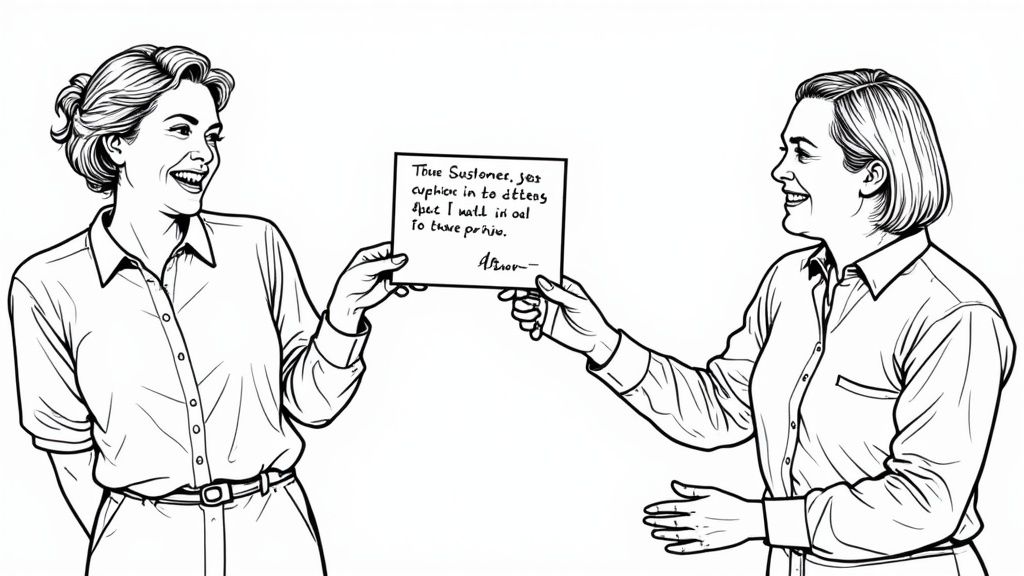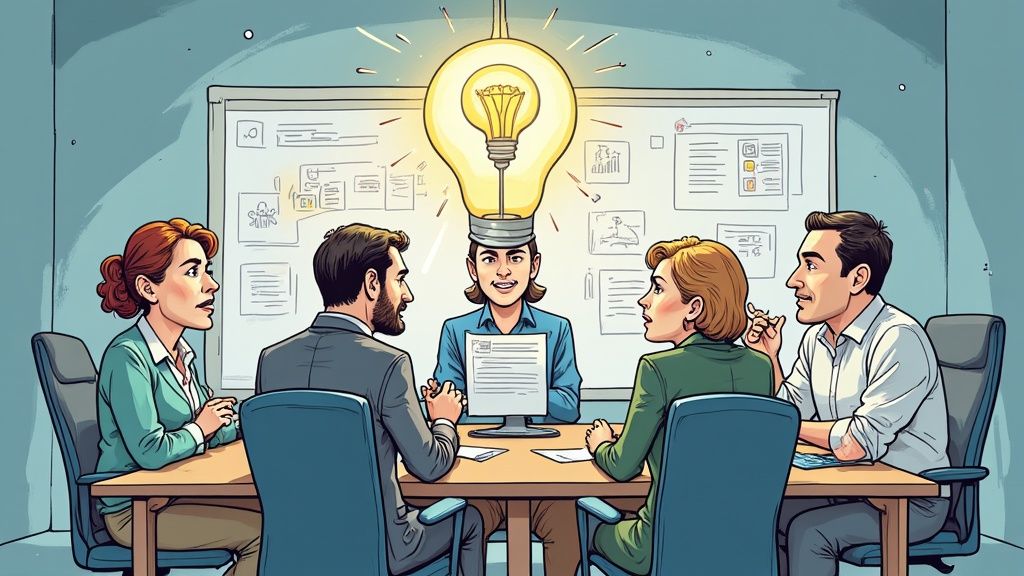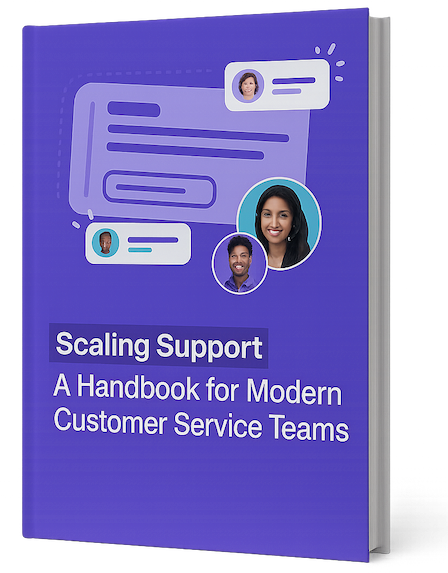"The Psychology Behind Effective Customer Apologies":
The Psychology Behind Effective Customer Apologies

When customers receive an apology, they don't just hear the words – they experience a complex emotional response. Simply saying "I'm sorry" isn't enough. The most effective apologies tap into specific psychological needs and responses that determine whether customers truly feel satisfied and heard.
The Power of Acknowledgment
Customers need to feel understood and validated when something goes wrong. When problems arise, people often feel dismissed or that their concerns don't matter. A meaningful apology starts by acknowledging their experience and emotions. For example, if a customer spills coffee on themselves in your coffee shop, a quick "Sorry about that!" feels shallow. But when an employee takes time to recognize their frustration and inconvenience, it creates a genuine human connection. This validation helps customers feel respected and heard.
Responsibility and Remorse: Key Ingredients
Taking clear responsibility and showing authentic remorse makes apologies more impactful. Studies show customers are twice as likely to forgive companies that give sincere apologies compared to those that just offer compensation. This reveals how much people value genuine remorse over quick fixes. Even when issues aren't directly caused by staff (like weather delays), acknowledging the impact on customers' plans and expressing real regret builds trust. The key is avoiding blame and focusing on understanding how the situation affected the customer.
Shifting Focus From Apology to Solution
While apologizing matters, dwelling on it too long can backfire. After the initial acknowledgment, customers want to see action. Moving quickly from "I'm sorry" to "Here's what we'll do to fix this" shows you're focused on making things right. When a customer gets a damaged product, briefly apologize then immediately outline the replacement process and perhaps offer a gesture of goodwill like a discount. This balanced approach addresses both emotional needs and practical concerns.
By understanding these psychological elements, businesses can craft apologies that truly resonate. The combination of validation, responsibility, and solution-focused action transforms negative experiences into opportunities to strengthen customer relationships. Meaningful apologies aren't just about the words – they're about making customers feel valued and respected throughout the service recovery process.
That maintains natural flow and avoids AI cliches, while keeping core structure, images, and length:
Crafting Apologies That Actually Resonate

An effective apology is much more than just saying "I'm sorry." It requires a careful combination of empathy, accountability, and commitment to making things right. For businesses looking to rebuild trust with customers after a misstep, understanding how to craft a meaningful apology is essential. Let's explore what makes an apology resonate and how to deliver one that strengthens customer relationships.
Key Components of a Resonant Apology
While quick responses are valuable, authenticity matters most. A thoughtful, genuine apology will have more impact than a rushed, superficial one. Here are the vital elements to include when apologizing to customers:
-
Acknowledgment: Show you truly understand the specific issue and its impact. Instead of vague statements like "Sorry for any trouble," name the problem directly: "We understand how frustrating the delayed shipping was for your order." This demonstrates you're paying attention to their situation.
-
Responsibility: Own your part without making excuses, even if external factors played a role. Using phrases like "We should have told you about the delay sooner" shows accountability and builds credibility.
-
Remorse: Express sincere regret for how the situation affected them. A straightforward "We are truly sorry for this inconvenience" can go a long way when delivered with empathy.
-
Solution: Outline specific steps you're taking to fix things. This shifts focus to resolution and shows you're actively working to make it right. For example: "We've expedited your order to arrive within two business days."
-
Prevention: Explain how you'll avoid similar issues going forward. This shows you take their feedback seriously and are committed to improvement. "We're reviewing our shipping procedures to prevent future delays."
Striking the Right Balance
The best apologies maintain professionalism while taking full responsibility. Skip technical jargon or promises you can't keep. Focus on clear communication and showing real empathy for the customer's experience. Consider offering a future discount along with the apology – this can help turn a negative interaction into a positive one by both acknowledging the problem and encouraging another chance to serve them. Studies back this up: research from Nottingham School of Economics found customers are twice as likely to forgive companies that apologize sincerely versus those that only offer compensation. This shows how a genuine apology can actually build stronger customer loyalty when handled well.
Transforming Angry Customers Into Brand Advocates
A well-crafted apology can build stronger, more loyal relationships with customers. When done right, a genuine apology is often more meaningful than simply offering compensation. According to research by the UK Institute of Customer Service, saying "I'm sorry" alone can boost customer retention by 17%. Even more striking, customers who receive sincere apologies are four times more likely to actively recommend your brand to others.
The Power of Turning a Negative Into a Positive
When customers are upset after a bad experience, their emotions are like a coiled spring of tension. While a basic, scripted apology might temporarily calm things down, it doesn't address the underlying frustration. In contrast, a genuine, thoughtful apology helps release that negative energy and creates space for rebuilding trust.
Consider this example: A customer receives a damaged product. Simply refunding their money handles the financial aspect but ignores how frustrated and inconvenienced they felt. However, if you combine that refund with a heartfelt apology, quick replacement, and small discount on their next purchase, you show that you truly care about making things right. This comprehensive response can transform an angry customer into someone who actively champions your brand.
Empowering Your Team To Deliver Authentic Apologies
Creating a team that excels at turning difficult situations around starts with building a culture of empathy and accountability. Front-line employees need to feel confident taking ownership of problems and offering sincere apologies without worrying about negative consequences.
Here are key steps to make this happen:
- Training: Focus on programs that develop active listening, empathy, and authentic apology skills. Practice scenarios help prepare staff for challenging conversations.
- Clear Communication: Give guidelines for apologies while letting employees personalize their responses and show genuine concern.
- Feedback Systems: Set up ways to track how well apologies work and find areas to improve. Ask customers to share thoughts on how issues were handled.
- Empowerment: Let staff go beyond standard fixes. Small personal touches like handwritten notes or service upgrades often make lasting positive impressions.
Turning Complaints Into Opportunities for Growth
When you start seeing complaints as chances to improve rather than just problems to solve, you can build a culture focused on getting better every day. Teaching employees how to give heartfelt, effective apologies equips them to strengthen customer relationships and turn negative experiences into positive ones. This approach doesn't just fix immediate issues – it creates deeply loyal customers who stick with your brand long-term.
Moving From Apology to Active Problem-Solving

A sincere apology is essential when a customer has a bad experience, but it's just the starting point. The key is smoothly shifting from "I'm sorry" to "Here's how we'll fix this." Research shows that spending too much time apologizing can actually make customers less satisfied. After acknowledging the issue, the focus needs to move quickly to finding solutions.
Why Action Speaks Louder Than Words
Studies from Harvard Business Review confirm that customers care more about getting their problem solved than hearing extended apologies. A brief, genuine apology followed by concrete actions leads to the best results. For example, if a customer receives a damaged product, simply refunding their money addresses only part of the issue. Offering expedited shipping on a replacement plus a discount on their next order shows you're serious about making things right. This approach can turn a negative situation into a chance to build stronger customer loyalty.
Guiding the Conversation Towards Solutions
Moving from apology to problem-solving takes specific skills. First, listen carefully to fully understand how the issue affects the customer. Then, outline clear steps you'll take to fix it, with realistic timelines and regular updates. When possible, give customers choices in how to resolve their issue. Working together this way helps rebuild trust and shows your commitment to their satisfaction.
Creative Problem-Solving: Beyond Standard Compensation
Finding unique ways to resolve customer issues can create memorable positive experiences. Instead of just offering standard refunds or credits, look for solutions that match each customer's specific situation. For instance, if someone faces major shipping delays, consider upgrading their shipping permanently or including a relevant free product with their order. These thoughtful touches mean more than basic compensation and demonstrate genuine care.
Implementing a Solution-Focused Approach
To build a team that excels at problem-solving, invest in training that gives staff the right skills and confidence to handle challenging situations. This includes teaching active listening, empowering people to make decisions, and providing resources to implement creative fixes. When your team feels equipped to take ownership and go above and beyond, you not only solve immediate issues but build lasting customer relationships. A recent study by the Nottingham School of Economics found that 45% of customers withdrew negative feedback after receiving a proper response, showing how important it is to address concerns quickly and effectively.
Avoiding Common Apology Pitfalls That Destroy Trust

Beyond mastering the key elements of an effective apology, understanding what mistakes to avoid is just as crucial. Certain missteps in the apology process can damage customer trust even more than the original issue. Let's explore the most common pitfalls that can derail your service recovery efforts and how to sidestep them.
The Dangers of Defensiveness
Taking a defensive stance is one of the most harmful approaches when apologizing. When customers feel upset, their perception becomes their reality. If you respond defensively, even when you believe you're not at fault, you invalidate their experience and make things worse. Research by HelpScout shows that this "defend and deny" approach often backfires. Just as medical studies reveal that doctors who admit mistakes face fewer lawsuits, customer service teams who take responsibility, regardless of external factors, are more successful at rebuilding trust. For example, instead of saying "The shipping delay was due to a postal service error, not us," try: "We understand how frustrating the delay is, and while the postal service experienced issues, we should have communicated that proactively." This validates their experience while showing accountability.
Why Generic Apologies Fall Flat
Stock apologies like "I'm sorry for any inconvenience" come across as insincere and robotic. Customers want genuine interactions where they feel heard and understood. Think about receiving a form letter versus a personal note – the difference is significant. Focus on addressing the specific situation at hand. If a customer receives incorrect items, acknowledge the exact error: "We sincerely apologize that your order contained the wrong items. We understand how frustrating this is, especially when you were expecting…" This focused approach demonstrates that you're paying attention to their individual situation.
Shifting Blame Erodes Trust
Like defensiveness, deflecting responsibility onto others damages your credibility. While outside factors may contribute to problems, focusing solely on them as the cause makes customers feel dismissed. Instead, start by acknowledging how the situation affected the customer, then briefly explain any contributing factors. Rather than saying, "The system crashed due to a power outage, so we couldn't process your order," try: "We are so sorry your order wasn't processed. We experienced a system outage due to a power surge, which unfortunately impacted your transaction." This approach puts empathy first while maintaining transparency.
Over-Promising and Under-Delivering
While solutions are essential, be careful not to make promises you can't keep. Setting unrealistic expectations only leads to more disappointment and further erodes whatever trust remains. Focus instead on offering achievable solutions – it's better to under-promise and over-deliver. A study from the Nottingham School of Economics found that 45% of customers withdrew negative feedback after receiving an appropriate response, showing how proper resolution can effectively rebuild customer confidence.
Building an Organization That Masters Service Recovery
Creating a company culture focused on meaningful customer apologies starts with shifting how your team views complaints. Instead of seeing them as problems to solve, recognize them as chances to build stronger customer relationships and loyalty. Success comes from giving your team the tools and confidence to handle difficult conversations authentically.
Training: The Foundation of Effective Apologies
Just like athletes need practice to perform under pressure, your team needs the right skills to handle challenging customer interactions well. Focus training programs on core skills like active listening and showing empathy, which help employees truly understand customer perspectives and craft genuine apologies. Give plenty of hands-on practice through role-playing exercises so the team can deliver sincere apologies confidently, even in tough situations.
Standardized Protocols With Room for Personalization
To maintain consistent service quality, establish clear company-wide guidelines for handling apologies. This ensures customers receive reliable care regardless of which team member helps them. However, leave room for human connection – let employees adapt the basic framework (acknowledging the issue, expressing regret, offering solutions) using their own authentic words and style to show empathy. This balanced approach delivers both consistency and genuine care.
The Power of Feedback and Continuous Improvement
Set up systems to measure how well your apologies work and identify ways to improve. Regularly ask customers for feedback on issue resolution through surveys, follow-up emails or direct conversations. Use these insights to refine your protocols and training. Research from the Nottingham School of Economics found 45% of customers withdrew negative feedback after receiving an appropriate response – showing the clear impact of effective follow-up.
Celebrating Success and Reinforcing Positive Practices
While acknowledging mistakes matters, celebrating service recovery wins is equally important for encouraging good practices. Share examples when employees successfully turned negative experiences positive. This recognizes great work while providing concrete learning examples for others. Building a culture that empowers employees to go above and beyond for customers leads to higher satisfaction and loyalty overall. The Nottingham research on apology effectiveness reinforces why mastering service recovery matters.
Tired of juggling Intercom ratings and Slack messages while trying to keep your customers happy? Discover how SupportMan can streamline your customer service workflow, boost team morale, and transform negative feedback into opportunities for growth. Start your free trial today – no credit card required! https://supportman.io


